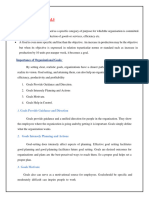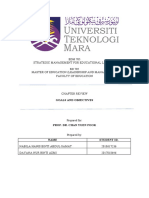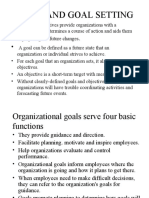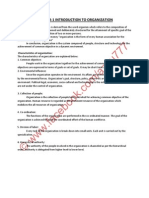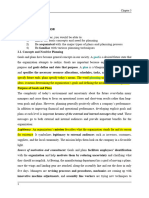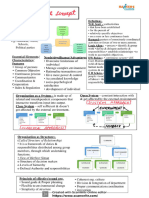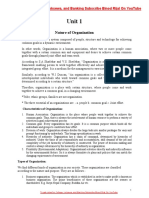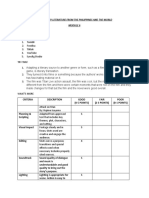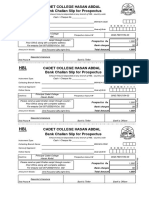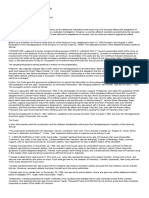0% found this document useful (0 votes)
20 views6 pagesSOC 311 Lecture 4
Organizational goals are targets set by leaders to guide the output and success of an organization, influencing employee workflow and overall effectiveness. These goals can be categorized by hierarchy and time frame, including mission, strategic, tactical, and operational goals, and are essential for providing direction, motivation, and effective planning. However, challenges such as goal displacement and substitution can arise, necessitating ongoing goal management to ensure alignment with the organization's purpose and adaptability to changing circumstances.
Uploaded by
jegedekehindetemitatCopyright
© © All Rights Reserved
We take content rights seriously. If you suspect this is your content, claim it here.
Available Formats
Download as DOCX, PDF, TXT or read online on Scribd
0% found this document useful (0 votes)
20 views6 pagesSOC 311 Lecture 4
Organizational goals are targets set by leaders to guide the output and success of an organization, influencing employee workflow and overall effectiveness. These goals can be categorized by hierarchy and time frame, including mission, strategic, tactical, and operational goals, and are essential for providing direction, motivation, and effective planning. However, challenges such as goal displacement and substitution can arise, necessitating ongoing goal management to ensure alignment with the organization's purpose and adaptability to changing circumstances.
Uploaded by
jegedekehindetemitatCopyright
© © All Rights Reserved
We take content rights seriously. If you suspect this is your content, claim it here.
Available Formats
Download as DOCX, PDF, TXT or read online on Scribd
/ 6















